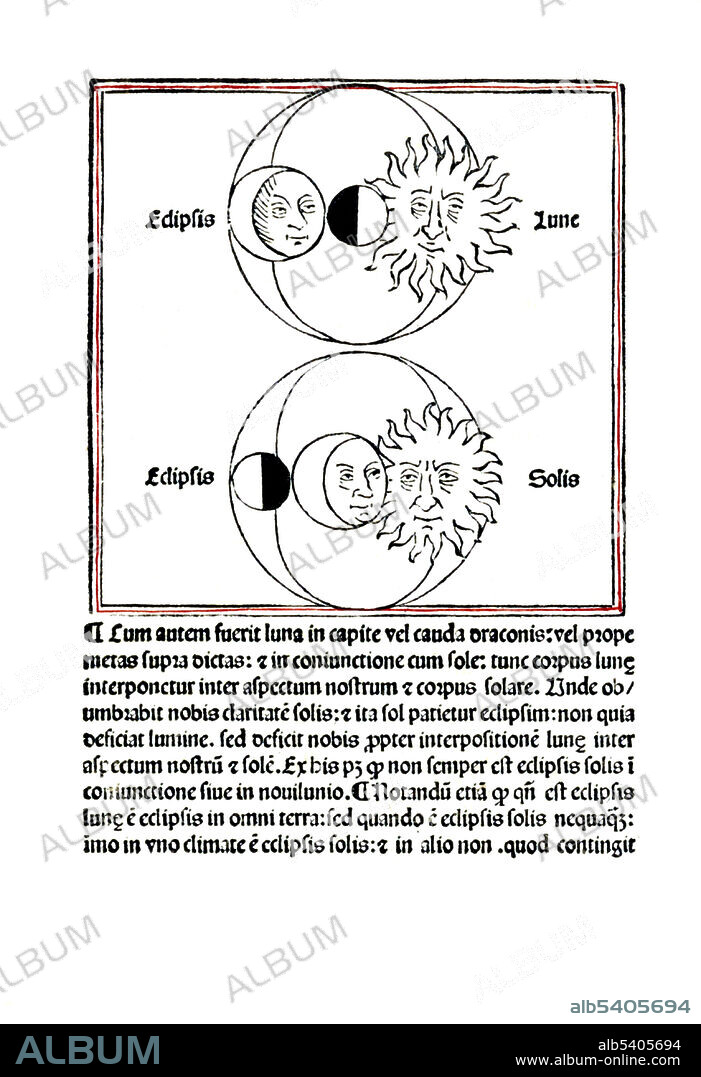alb5405694
Johannes de Sacrobosco, Solar and Lunar Eclipse, 13th C

|
Ajouter à une autre Lightbox |
|
Ajouter à une autre Lightbox |



Avez-vous déjà un compte? S'identifier
Vous n'avez pas de compte ? S'inscrire
Acheter cette image
Titre:
Johannes de Sacrobosco, Solar and Lunar Eclipse, 13th C
Légende:
Voir la traduction automatique
De sphaera mundi is a medieval introduction to the basic elements of astronomy written by Johannes de Sacrobosco, circa 1230. Johannes de Sacrobosco (circa 1195, circa 1256), was a scholar, monk and astronomer who was a teacher at the University of Paris. He wrote a short introduction to the Hindu-Arabic numeral system which became the most widely read introduction to that subject in the later medieval centuries (judging from the number of manuscript copies that survive today). He also wrote a short astronomy textbook, De sphaera mundi, which was widely read and influential in Europe during the later medieval centuries as an introduction to astronomy. In De Anni Ratione, his longest and most original book, Sacrobosco correctly described the defects of the then-used Julian calendar, and, three centuries before its implementation, recommended a solution much like the modern Gregorian calendar.
Crédit:
Album / LOC/Rare Book Selections/Science Source
Autorisations:
Modèle: Non - Propriété: Non
Questions sur les droits?
Questions sur les droits?
Taille de l'image:
3080 x 4500 px | 39.7 MB
Taille d'impression:
26.1 x 38.1 cm | 10.3 x 15.0 in (300 dpi)
Mots clés:
13E SIECLE • 13EME S • ASTRONOMIE • CÉLÈBRE • CELEBRITE • ÉCLIPSE • ILLUSTRATION • MONDE • SCIENCE: ASTRONOMIE • TREIZIÈME SIÈCLE • XIIIE SIECLE
 Pinterest
Pinterest Twitter
Twitter Facebook
Facebook Copier le lien
Copier le lien Email
Email
